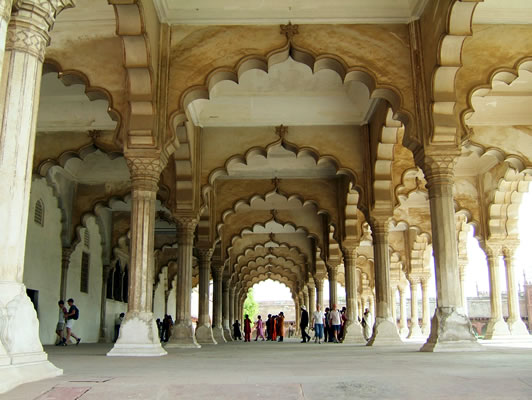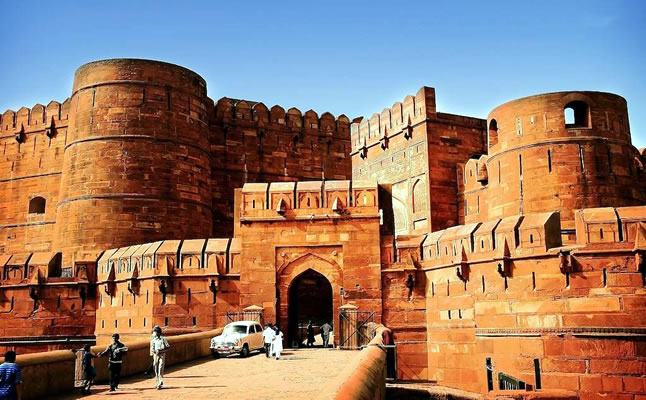The Lodi Tomb – Sikandara
(15-17-26 A.D.)
Hindi Version | View Gallery |
|
[Not a valid template]This anonymous tomb stands on a high square plinth which had chhatris at the corners, as are there in the tomb of Shershah at Sasaram (C 1545 A.D.) The main tomb is essentially square, but its angles have been chamfered to give it an octagonal appearance. This is the “Baghdadi-Muthamman” (Octagonalised Square) plan which was popularly used by the Mughals (1560- 1658). The interior is composed of a central octagonal hall, four octagonal rooms at the corners and oblong arcaded dalans on the sides, all interconnected by passages. [Not a valid template]This was perhaps the beginning of the specific “Navagrha Plan of the Mughals”. There are three broad, typical pathan, arches on each facade, protected by a chhajja, brackets whereof have survived, it was roofed by a broad, massive dome which has been destroyed. Two tombstones, obviously of husband-wife are still there, sunk in the roof. It seems that cenotaphs were also there in the central hall, while the real graves were in the crypt the entire construction is of rubble and brick masonry with minimal stone-work. It was all thick plastered, traces of painting have survived. [Not a valid template]There is no historical record to identify the Prince or Noble who was buried here along with his consort. Though, stylistically, the tomb can be assigned to the reign of Ibrahim Lodi (1517-26 A.D.). As such, it is the earliest muslim mausoleum at Agra. It has been restored and conserved by the Archaeological Survey of India. |




